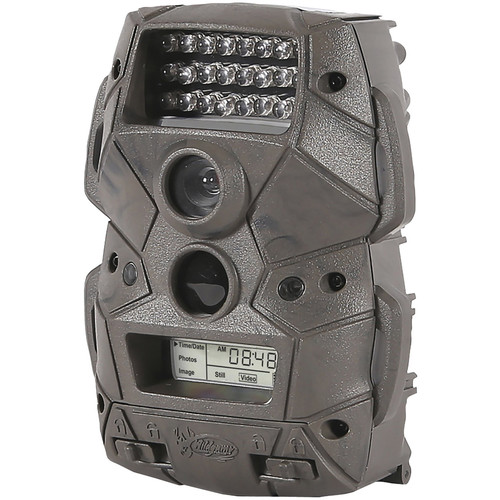

Look for a model that lets you choose from intervals between one minute to an hour during a timeframe you choose. Some cameras also have a time-lapse mode, which captures images over a predetermined period of time even if there’s no activity.Some cameras will capture movement as far as 80 feet away, ensuring you never miss anything.

One differentiating factor when you’re considering trail cameras is motion-sensor capability.You’ll also be limited in the amount of video footage you can shoot, giving you only seconds before it cuts off. One feature that might be worth considering, though, is whether your camera captures audio along with the video it gathers. However, you may not find that this level of quality is essential.
#Ac3d camera wildgame innovations reviews 1080p
Some cameras shoot higher-quality video than others, even offering 1080P HD resolution. Some cameras can even capture motion-detected shots while the time-lapse mode is in place. With trail cameras, you’ll also have the option of time-lapse mode to gather images over a period even when no activity is present. Many trail cameras operate in motion-sensor mode, only activating when something or someone comes into focus. How the images are captured is important as well. Some promise longer battery life than others, so look for this if it’s an important feature. Even if it’s only occasionally capturing images, you’ll be surprised how quickly your camera’s batteries need to be replaced. You should also consider battery life while you’re shopping for a trail camera. That may also keep a thief away out of fear that the images might be streaming to an external source. There’s also the fact that your camera will capture photo and/or video of anyone who tries to steal it. Although this won’t guarantee it can’t be stolen, it will act as a theft deterrent. This is especially concerning if you’ve left it in the woods year-round since someone could come along and steal it.įor extra security, though, you can buy a locking cable that will hold your camera in place. Some cameras use infrared lights or flashes to capture images at night, which could be an issue if you’re trying to keep it quiet that a camera is there. Whether you’re waiting to capture intruders on your property or you’re using a trail cam for its original purpose, that invisibility is important. If you plan to use your camera this way, look for a trail camera that specializes in capturing video in night mode and, if you want it, you’ll need to make sure it records audio. They’re designed to be easily mounted while also remaining fairly inconspicuous in colors like black, gray and camouflage. In addition to their value in stalking prey, though, trail cameras have become an affordable type of security camera. By the time you get around to your next hunt, you’ll already be all too familiar with the spot you’ve chosen. You may even find that you’re more excited about the pictures you’re capturing on a daily basis than the activity of hunting itself. In fact, you’ll rarely meet an avid hunter who doesn’t own at least one. One way to avoid spending hours in wait is to use a trail camera to monitor the habits of your prey so that you can then prepare to show up when you’re most likely to get results.Īs trail cameras have become more accessible to the average hunter, they’ve grown to be a very popular tool. In some cases, they may not even know the best hunting ground, especially if they’re newer to the sport.

Hunters can spend hours sitting in the woods, waiting for game to pass by.


 0 kommentar(er)
0 kommentar(er)
